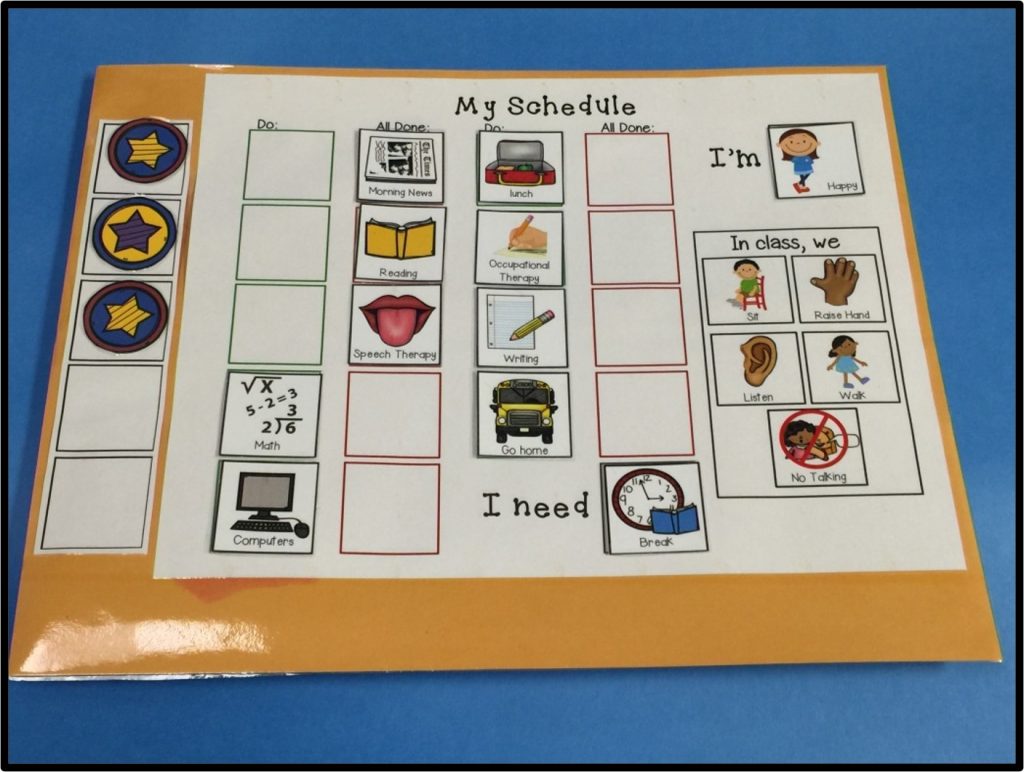
In an article for Speech Spotlight, I mentioned the use of visual schedules. Although the use of visual schedules is commonly connected to working with our students on the spectrum, they are super helpful when working in a variety of settings and with students in general since our students all have diverse needs.
DO VISUAL SCHEDULES REALLY WORK?
Yes! I use them with my little ones to facilitate movement from task to task and reduce any anxiety that may exist related to wondering when Mommy or Daddy will return for them. Of course, I also use them with my students on the spectrum with great success. I once had a student that had spent his elementary years without learning to remain in his seat for 5 minutes to complete a task. I was warned. His teacher was warned. I saw firsthand how the student would sit for 2 minutes or less before he would stand up, wander around, or rock back and forth in a standing position. By the third session and using the visual schedules, he was sitting at his desk and working with me for over 30 minutes a session. It wasn’t me. It could have been anyone. In fact, I worked VERY hard to get his teachers to consistently incorporate his visual schedule. Unfortunately, they were not consistent (or use at all in some cases) with the visual schedule. During progress monitoring, we could see the great gains made in certain areas where his visual schedule was utilized versus other areas where it was not utilized consistently, and progress was limited.
HOW CAN A VISUAL SCHEDULE HELP?
PROVIDES STRUCTURE – I’m a list person. I write a million lists a day just so that I can cross things off and visually see what I have accomplished for the day. I get a sense of accomplishment. Visual schedules are sort of the same idea. Students can visually see the structure of the session (or their day) and mark the things off that they accomplished to continue moving forward. For students that need it, I also pair it with a “FIRST _____ THEN _____” chart. I will have students move their speech icon from their master visual schedule (if they have one) and move it to my FIRST/THEN chart and choose what they want to work for. Once they are have completed their work with me, they take it off the FIRST/THEN chart and engage in their preferred task. When that task is completed, they go back to the master visual schedule to see what is next.
SETS EXPECTATIONS – This goes along with my list-loving side! Instead of our talking to our students to let them know how many tasks need to be completed, they can visually SEE what tasks need to be completed. I love this! I love this for ME too! (ha! ha!) The visual schedule shows them what they are EXPECTED to complete before the end of the session or day.

REDUCES ANXIETY & CONFUSION – Not just the little ones can experience potential anxiety and confusion. Any of our students can. This includes our students on the spectrum, students with intellectual disabilities, students with processing issues, students with language issues, etc…

WHERE CAN I USE VISUAL SCHEDULES?

Anywhere! A master schedule can tell the class as a whole how the day is expected to go. Schedules can also be tailored for the individual student and placed on a manila envelope for easy storage of extra icons. Teachers, Speech Pathologists, and Parents can also personalize the child’s schedule by using real pictures of classrooms, teachers, peers, and favorite items.
You can have a separate visual schedule just for your speech room that you change up every session. Parents can use visual schedules to assist their children in completing daily routines and chores.
Go here, for a free visual schedule like the one above and/or to send home for parents.
Want more great tips, tricks, and ideas for successful speech therapy? Subscribe to our , or visit us on Instagram, Pinterest, or Facebook.



